In the language of the Taino people who inhabited Jamaica prior to the arrival of Christopher Columbus in the late 1400s, the name of the picturesque but mountainous Caribbean island translates to “island of wood and water.”
Both of these elements are presided over by the Jamaica Defence Force (JDF) Air Wing. Alongside fulfilling its military security role, the Air Wing is charged with aiding to preserve life at sea, as well as protecting the precious and diverse tropical ecosystem from fire.
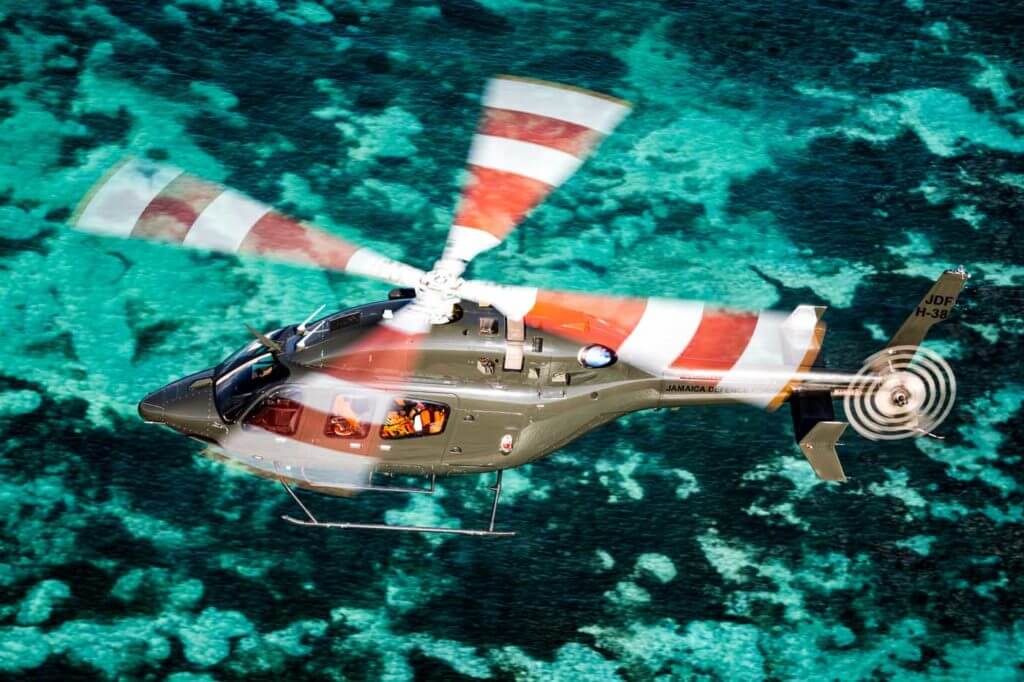
Early steps
The Air Wing was established in 1963, just a year after Jamaica became an independent state, to provide air support for the new sovereign responsibility of defense. The Jamaica Air Squadron was initially formed from the Jamaica Flying Club, operating private aircraft with the assistance of some former British Royal Air Force pilots who were club members. By 1977, the squadron had become its own autonomous unit under its present-day title.
“When we looked at what we had to do in Jamaica, we didn’t really have a government military asset. We used to rent aircraft from flying clubs, but Jamaica is a very hilly country so there was a need for us to acquire our own aircraft,” explained Lt. Col. Brian Lundy, commanding officer of the Air Wing. “We started out with the Bell 47G. We call it ‘the bubble,’ which had a single engine and pretty much a 360-degree view.”
The Air Wing’s first Bell 47G was shipped to Jamaica and assembled in the JDF workshop before being pushed down the road to its operating base. Delivery of the second aircraft was quicker, but no less complex, as the JDF self-ferried it from the company’s Fort Worth facility in a 1,900-mile (3,050-kilometer) journey that amassed over 40 hours of flight time. Since then, the Air Wing has flown almost exclusively Bell products, with the sole exception being a brief flirtation with the Airbus AS355 N during the ’90s.

“From a rotary-wing standpoint we have maintained our relationship with Bell for a very long time,” said Lundy. “After the Écureuils [AS355 Ns] we acquired Bell 407s, and those helicopters have worked fantastically for us.”
Throughout its history, the JDF Air Wing has systematically expanded its capability and its fleet with various civil airframes, including the Bell 206, 212 and 412.
“The unit started with a few pilots and air crewmen,” explained Lundy. “We’ve grown over the years to 20-odd pilots and a large number of air crewmen and maintainers.”
From 1970, JDF helicopter pilots were trained in Canada, but in 2007 this training moved in-house to the Caribbean Military Aviation School in Jamaica, where they earn their wings on the Bell 206 or the Diamond DA42 Twin Star airplane. First- and second-line maintenance is also conducted by the JDF, and this desire for self-sufficiency has driven a consolidation and modernization program.
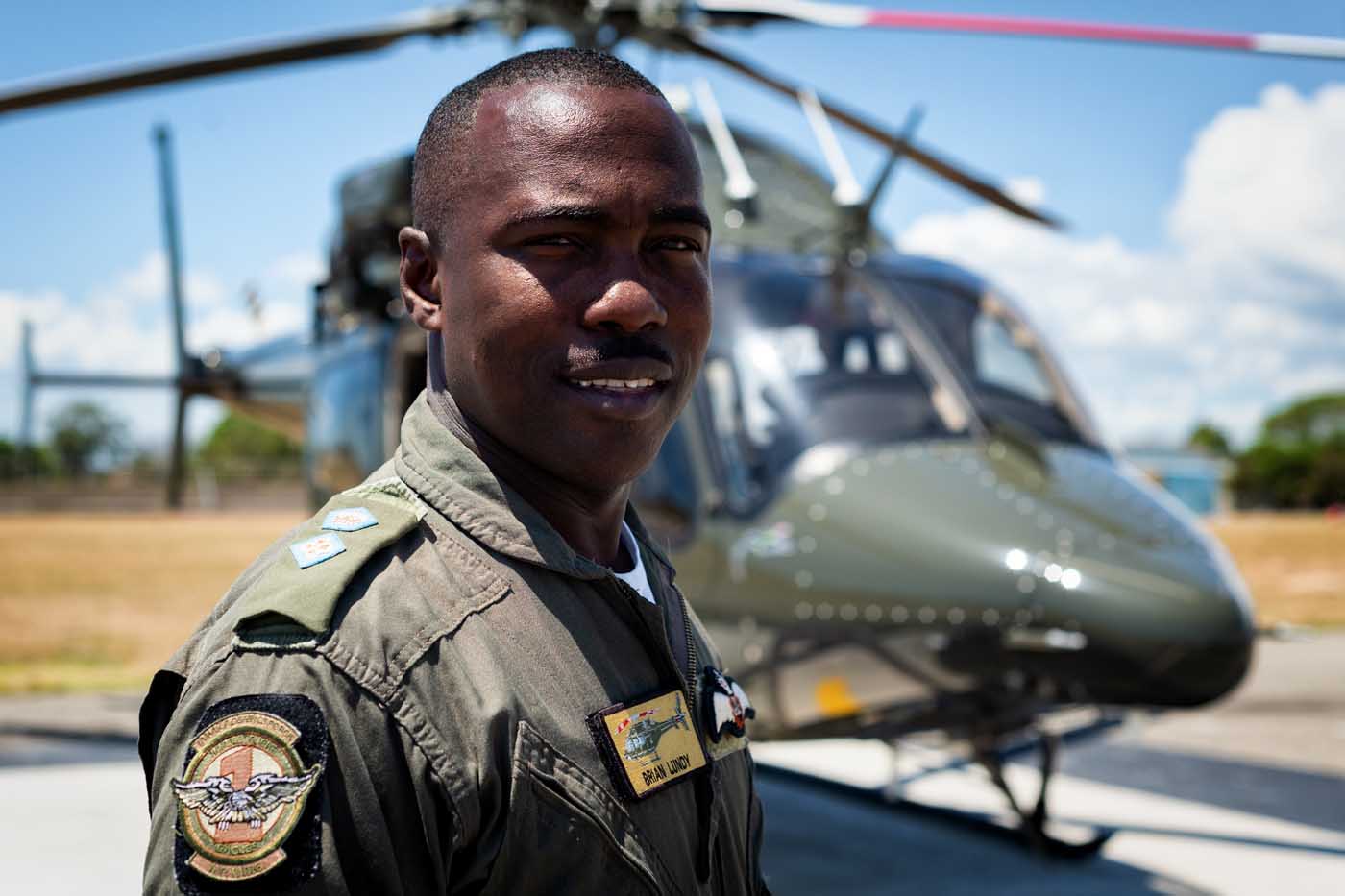
“When we assessed our operations, we realized that with the 206, the 407, the 412, that was already three different platforms that we had to maintain and get parts for,” Lundy explained. “But having looked at what we need to do for the country, we have now decided to maintain two types. The Bell 206 that we use for training, and the Bell 429 which we use for everything else.”
JDF helicopter pilots initially qualify as “Category 3” pilots, with limited duties as they build experience on the type. “They will fly certain missions, flying with senior pilots occasionally to build experience,” Lundy said. “They then progress to a Cat 2 (after at least 100 hours), learning how to conduct winching, firefighting with a Bambi Bucket and rappelling, amongst other missions.”
The JDF placed nine Bell 429s on order, three of which have been delivered. Two more should arrive before the end of 2020. The aircraft are built to a civilian specification, with no militarization necessary. However, they are equipped to carry Goodrich hoists and are also fitted with Trakka Systems TrakkaBeam searchlights and Wescam MX-10 Gen-IV cameras, as well as fast-roping and rappelling equipment necessary to deploy special forces. For firefighting missions, a 260-gallon (1,000-liter) Bambi Bucket from SEI Industries can be slung under the aircraft.
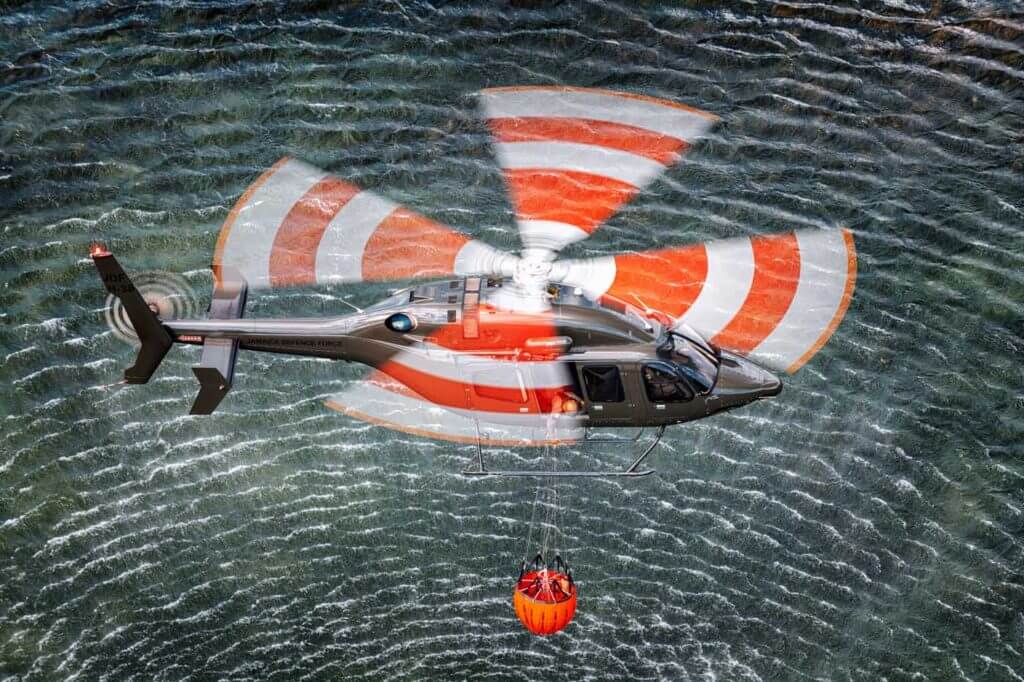
Sea change
While the carrying capacity of the 429 is a step down from the 412, Lundy feels that the technology on the new aircraft more than compensates.
“Transitioning from the 412 to the 429, we get a nice glass cockpit, so what we have now is top of the line,” he said. He reserved particular praise for the aircraft’s four-axis automatic flight control system (AFCS). “The automation is fantastic. When we went to the drawing board to decide what we needed based on the amount of over-water work, we wanted to ensure that pilot workload was reduced. So, all of our aircraft will have the four-axis autopilot.”
That maritime capability is important. With an exclusive economic zone (EEZ) some 24 times larger than its land mass and a coastline used both for leisure and for business, much of the Air Wing’s activity is at sea. The Air Wing also uses a small fleet of Textron Beechcraft King Air fixed-wing aircraft for maritime patrol, but only a helicopter can deploy personnel and perform rescues. Operating these helicopters is the responsibility of Number 2 Flight of the Air Wing. No. 2’s commanding officer, Maj. Jaime Walsh, explained the scale of the unit’s task.
“Jamaica has a 1,022-kilometer [635-mile] coastline compared to our 260,000-square-kilometer [100,400-square-mile] EEZ, which we have to manage and monitor when it comes to operations like SAR [search-and-rescue], anti-narcotics and fishery protection,” Walsh said.
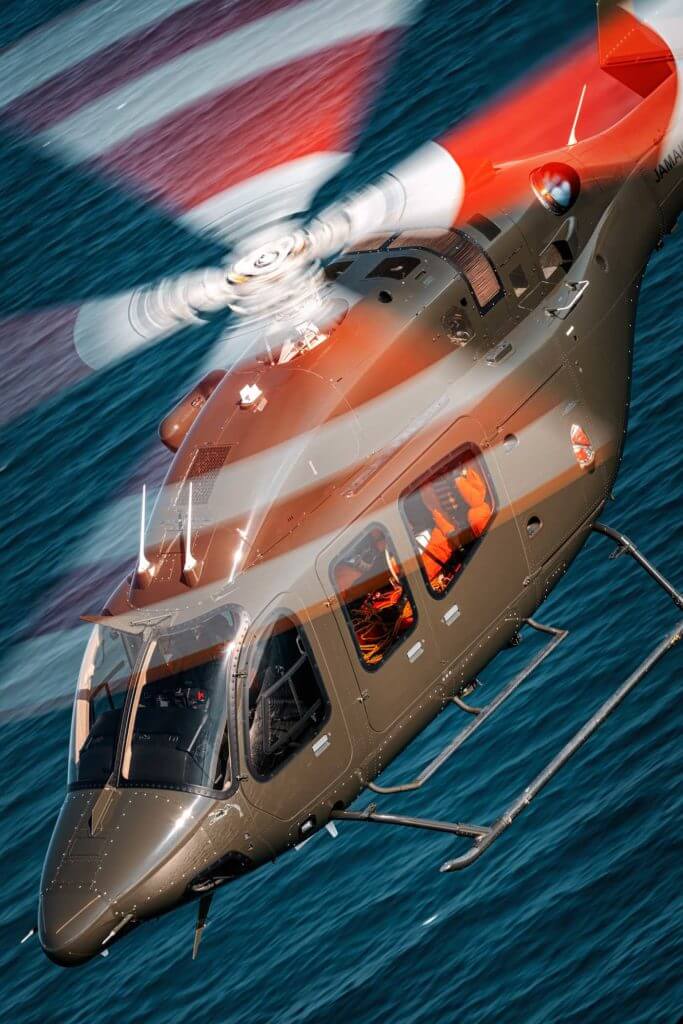
With the Caribbean as lucrative for fishermen as it is for the tourism industry, and with a vast number of outlying islands (known locally as cays) having limited medical facilities, much of No. 2 Flight’s activities involve either SAR or medevac missions.
While the Bell 429 is certified for single-pilot night and instrument flight rules (IFR) operation, the JDF Air Wing typically operates offshore with two pilots, a winch operator and a winchman. Class 1 Aircrewman Sgt. Damian Facey is one of the most experienced in the unit.
“Search-and-rescue missions are my passion,” Facey said. “I won’t say my favorite because I enjoy the variety of my job, but I love the challenge of SAR missions.”
Aircrewmen in the Air Wing are trained and perform in a variety of roles, but for SAR missions they qualify first as winch people, with winch operators selected from that cadre. “To select winch operators, we look for people who are enthusiastic and show a level of responsibility. You also have to be a class 1 aircrewman,” Facey said.
As well as his flying duties, Facey is head of the aircrew life support equipment (ALSE) department. He described how varied the life of a crewperson could be. “You may be sent to different departments like Medical or ALSE, but your primary role is aircrewman,” he said. “Once you complete basic aircrewman training, we have a certain number of hours to do. Then we move forward in training all of the flying roles. It’s a bit challenging, because we are all cross trained to fulfill all the roles like basic firefighting with the Bambi Bucket, troop-carrying and SAR. That’s just some of what we do.”
Whether it is moving JDF troops, controlling fires in the mountains or lifting a casualty from a cruise ship, almost every operational task that No. 2 Flight undertakes will require a crewmember, and each demands a subtly different application of their craft. But Facey was unfazed by the breadth of skills that he could be required to produce, from memory, at the drop of a hat.
“No matter what mission comes up, you’ve been trained to do it, and it’s about going back down in the brain box,” he said. “It’s all about remembering what you were taught.”

Hard realities
Facey’s cheerful disposition belies the fact that his is a difficult and sometimes dangerous job that requires the utmost professionalism. The tropical weather here can change rapidly and jeopardize even the most benign of operations. And of course, the JDF is ultimately a military organization and this aspect of No. 2 Flight’s activities is something that Walsh is candid about.
“We have, unfortunately, a very high crime rate,” Walsh said. “We are a stepping-stone between Southern and Northern America for illegal transits, and a transfer point for illegal drugs and guns.”
This is a problem that the Jamaican government is working hard to solve, and while the night vision imaging systems (NVIS) and infrared cameras on the JDF helicopters are undoubtedly essential to fly safely at night and detect survivors in the water, they are just as useful for detecting those who would much rather not be found — and making a discrete approach under the cover of darkness.
If this indirect support to the infantry and special forces is the hard edge of Jamaican military power, then its increasing role in humanitarian relief and disaster support is the softer side to the regional leadership role that the country sees itself occupying.

“We are a regional military leader, so we want to set the example for the other Caribbean nations when it comes to standards, training and execution of operations,” said Walsh. “Particularly when it comes to disaster relief, we can respond not just with air support but also engineering and logistics support.”
In recent years the JDF has deployed troops to both Haiti and the Bahamas in order to provide assistance in the aftermath of devastating hurricanes. The JDF has also taken part in exercises with the District of Columbia National Guard to improve disaster response plans and resilience. The Air Wing plays a leading role in these preparations. During storms, some island fishermen are reluctant to comply with evacuation orders, so the JDF Air Wing provides a means by which provisions can be deployed ahead of time to those areas where they are likely to be needed.
Jamaica may have a relatively small military, but the operation of complex twin-engine helicopters across a mission set this broad should not be trivialized. The JDF Air Wing began as an afterthought; literally a flying club. It would doubtless have been easy for the fledgling unit to fall back on the advice and support provided by Canada, the U.S. and Britain in its formative years. Instead its personnel have chosen to grow their own wings and have since successfully navigated the harder route to self-sufficiency. The JDF now not only trains its own personnel, pilots and maintainers but also offers that training out to other nations.
The Air Wing is a long way from being a flying club now, as Walsh was keen to point out. “We have a high operational tempo,” he said. “And unlike most first-world squadrons who have specific roles, we do all of them.”
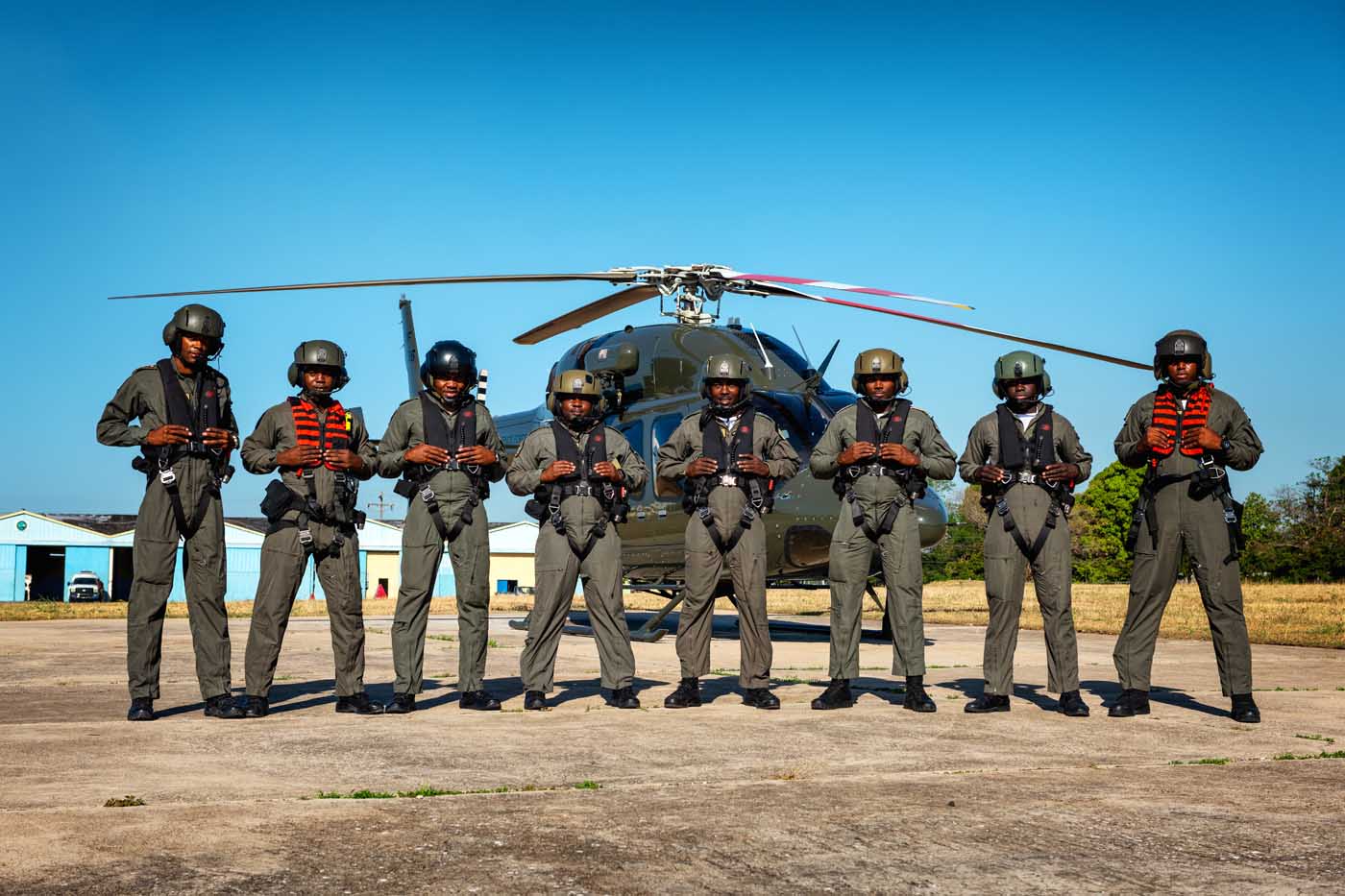
There is undoubtedly a lot to do. With Jamaica an attractive destination not only for visitors seeking sun, but also those with more sinister motives, and being situated in the heart of hurricane alley, the members of JDF Air Wing’s No. 2 Flight are likely to be as busy in the future as in the past. That seems to be just fine with their small but passionate team of aviators.
“Our motto is ‘We Fly for All,’ because of the amount of people that we have to assist, whether they are local or from visiting nations,” said Lt. Col. Lundy. “Today I could be flying the prime minister but come Monday I might be rescuing an injured mariner or picking up a patient from a boat. That keeps the experience up among the crews. And of course, being in Jamaica with the topography and the climate, it’s a wonderful area to fly over and we enjoy flying here in our little Caribbean island.”





